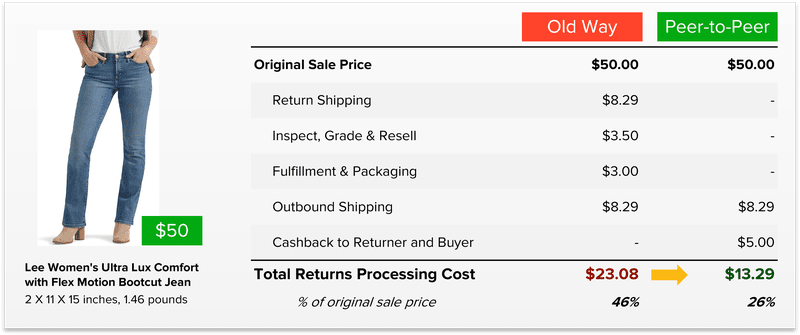Preparing for Peak Holiday Shipping Season [A Guide for Shippers]

Last updated on April 16, 2025

In this article
 7 minutes
7 minutes
- 2024 Important Dates
- Strategic Demand Analysis, Forecasting, and Marketing Execution
- Optimizing Fulfillment and Logistics
- Leveraging Technology
- Elevating the Customer Experience
- Deliver Packages Safely the First Time
- Preparing Customer Support Teams
- Managing Customer Returns Effectively
- Contingency Planning for Unforeseen Challenges
- Ensuring Scalability and Sustainability
- Converting Challenges into Strategic Wins
- Frequently Asked Questions
The peak holiday season is the most critical time of the year for e‑commerce businesses, characterized by intense order volumes, high consumer expectations, and operational complexities. A proactive approach focused on forecasting and planning for logistics needs, customer service demand, and supportive technologies is essential for navigating this high‑stakes period effectively.
2024 Important Dates
The holiday peak season typically spans from October to December, encompassing key shopping events like Black Friday (November 29th), Small Business Saturday (November 30th), and Cyber Monday (December 2nd). With Thanksgiving falling on November 28th this year (which is the latest it can fall relative to Christmas), the 2024 holiday shopping season is the shortest that it can possibly be for shoppers who don’t start browsing or buying until November 29th.
In ‘normal’ years, daily shipment volumes can increase by up to 1,000% or more, placing significant strain on fulfillment operations. But some will see even higher spikes in demand this year due to the unusually late Thanksgiving Day. So the shipping deadlines below will feel tighter this year as carrier network capacity is constrained to fewer days, and thus, e‑commerce retailers will want to be more conservative with their delivery promises to customers needing to receive their orders before holiday events.
Carrier Published Shipping Deadlines to Ensure Delivery on or Before Christmas Eve
|
Carrier / Service
|
Contiguous U.S. (lower 48 states)
|
Alaska, Hawaii, International, Military
|
|---|---|---|
|
USPS Ground Advantage
|
December 18
|
|
|
USPS Priority Mail
|
December 19
|
|
|
USPS Priority Mail Express
|
December 21
|
|
|
UPS 3 Day Select
|
December 19
|
|
|
UPS 2nd Day Air
|
December 20
|
|
|
UPS Next Day Air
|
December 23
|
|
|
FedEx Ground Economy
|
December 13
|
|
|
FedEx Express Saver
|
December 19
|
|
|
FedEx 2Day & 2Day AM
|
December 20
|
|
|
FedEx SameDay
|
December 24
|
Strategic Demand Analysis, Forecasting, and Marketing Execution
Accurate forecasting is the foundation of successful holiday operations. Analyzing historical sales data to identify trends, understanding seasonal consumer behavior, and mapping inventory needs helps prevent both stockouts and overstock situations. Collaborating with suppliers well in advance to secure production and delivery schedules is critical. Factoring in extended lead times for manufacturing and transportation ensures inventory is positioned where it is most needed.
Taking the time to carefully plan promotions, new listings for bundle and/or kit SKUs, multi‑packs, etc., can all help to increase revenue opportunities.
Optimizing Fulfillment and Logistics
Meeting increased demand during the holiday season requires a well‑structured fulfillment strategy. Distributing inventory across multiple warehouses using outsourced fulfillment partners such as Cahoot can augment existing operational capacity and reduce transit times, lower transportation costs, and increase delivery reliability. Third‑party partners offer advanced tools and infrastructure to rapidly increase scalability while simultaneously enabling the positioning of products closer to high‑demand areas, ensuring faster delivery and better customer experiences. Additionally, diversifying shipping carriers mitigates risks associated with carrier delays or capacity shortages.
Make sure to review third‑party receiving deadlines and blackout dates, and plan to have inventory inbounded and fulfillment ready long before it needs to be. Communicate emergency contact info, volume forecasts (especially if any big spikes are expected from special promotions or sales such as Good Morning America Deals & Steals), and most importantly, make sure providers have enough buffer stock on hand to ship all orders on time, including any specialty items such as inserts or branded packaging materials.
Leveraging Technology
Leveraging technology is key to maintaining efficiency during peak periods and earning customer trust that can lead to loyalty and future orders. Enterprise Order Management Systems like Shopify, Pulse Commerce, and BigCommerce enable quick and efficient pick/pack operations, practically eliminate fulfillment defects, manage inventory and listing visibility across channels and marketplaces, and communicate with customers in real time about order status and tracking. Automated returns systems simplify post‑purchase processes, enhancing customer satisfaction and operational efficiency.
Elevating the Customer Experience
Providing an exceptional customer experience is a competitive differentiator during the holiday rush, especially post‑holiday, when customer‑initiated return requests will peak. Transparent communication about shipping deadlines and potential delays fosters trust. Branded tracking pages that include upsell and cross‑sell ideas, as well as other promotional and/or discount offerings, can help encourage repeat purchases and increase customer lifetime value. Offering Delivery Date Promises using tools such as Fenix Commerce or ShipperHQ, or Order Management systems already mentioned, like Pulse Commerce, where the customer can place an order knowing the estimated delivery date, helps increase conversion. Plus, offering real‑time order tracking and flexible shipping options reduces cart abandonment. Lastly, personalized packaging, branded unboxing experiences, and thoughtful details like gift notes or sample products can leave a lasting impression.
Deliver Packages Safely the First Time
Win loyalty and increase the likelihood of future orders by taking the time to prepare for safe and accurate delivery the first time. A bad experience during a time‑sensitive situation can push the customer away. So, make sure to include enough dunnage (void fill) to prevent damage in transit. Ship with the proper hazmat designation so orders are not returned to sender (and this also ensures that carrier accounts are kept in good standing). Create international shipments for validated addresses using the correct HTS Code, goods description, and compliance according to each destination country’s regulatory requirements. Most importantly, get organized and make sure to hand over packages to the correct carriers. Margins go out the window if orders have to be double‑shipped to arrive on time, or customers return orders because they were delivered late, not to mention the reputation risk for the brand.
Preparing Customer Support Teams
The holiday season places heightened demands on the customer service infrastructure. Expanding support teams and equipping them with training tailored to holiday‑specific scenarios enables quicker, more accurate resolution of customer inquiries and helps retain revenue when employees are trained to offer exchanges or gift cards rather than refunds for return requests. Comprehensive knowledge bases and automated chat solutions provide additional support layers, ensuring seamless communication.
Managing Customer Returns Effectively
Returns rates during the holiday season can approach 30%, making an efficient returns process a critical component of overall strategy. Clear, easily accessible return policies reduce customer frustration. Advanced systems for processing returns and restocking inventory minimize revenue losses and improve operational efficiency.
Contingency Planning for Unforeseen Challenges
Even with thorough preparation, unexpected challenges such as extreme weather or carrier delays can arise. Flexible contingency plans, including diversified carrier options and alternative fulfillment strategies (such as partnering with a solution provider that supports distributed ecommerce fulfillment service as discussed above), ensure continued operations during local disruptions. Active management of marketplace shipping templates associated with listings prevents the over‑promising of delivery commitments that customers rely on for a great experience.
Prepare hardware, such as shipping label printers, by cleaning printer heads to avoid blurry barcodes that will be returned to the sender or otherwise delay delivery. Stock plenty of label paper, thermal transfer ribbon, and the like. Consider procuring backup printers, barcode scanners, and packing slip pouches for international customs documents.
Ensuring Scalability and Sustainability
Scalable solutions are essential to handle the dramatic increase in holiday orders. Investments in automation, such as robotic picking systems or conveyor technologies, improve efficiency and accuracy. Implementing simple scan verification and next‑generation multi‑carrier shipping software into the fulfillment workflow achieves a similar result without the large capital expense. Sustainable practices, including eco‑friendly packaging options and carbon‑neutral shipping methods, appeal to environmentally conscious consumers while aligning with long‑term business goals and increasing brand reputation.
Converting Challenges into Strategic Wins
Peak season preparation should begin months in advance. Early steps include finalizing demand forecasts, optimizing inventory positioning, and testing technical solutions for peak performance. Training teams and conducting trial runs of fulfillment processes help identify and address potential issues before order volumes surge. Maintaining clear communication with all stakeholders and monitoring performance metrics ensures a smooth operation.
The holiday season presents a unique opportunity to demonstrate operational excellence and build lasting customer relationships. By focusing on strategic planning, leveraging technology, and prioritizing the customer experience, businesses can transform the challenges of peak season into a powerful growth opportunity. The most successful organizations approach this period with adaptability, innovation, and a commitment to delivering excellence.
Frequently Asked Questions
Why is it especially important for shippers to prepare early for the 2024 holiday season?
With Thanksgiving falling on November 28, the window between Black Friday and Christmas is tighter than usual. Shippers must move quickly to forecast demand, stock inventory, and plan carrier handoffs to meet customer expectations.
What strategies can help ensure on-time holiday deliveries?
Use delivery date promise tools (like Fenix Commerce or ShipperHQ), diversify carrier partners, and fulfill from distributed inventory when possible. Monitor carrier cutoff dates and avoid last‑minute shipments when network capacity is tight.
How can shippers elevate the unboxing and post-purchase experience?
Include personalized packaging, gift notes, and even product samples to surprise and delight customers. Branded tracking pages and clear return instructions can also increase loyalty and drive repeat purchases.
What systems help shippers stay organized and efficient during peak season?
Enterprise Order Management Systems (OMS) like Pulse Commerce, BigCommerce, or Shopify Plus enable fast pick/pack workflows, minimize fulfillment errors, and maintain visibility across sales channels and shipping carriers.
How should shippers handle post-holiday returns to protect revenue?
Make your returns policy customer-friendly but clearly defined. Offer exchanges or store credit when possible, and work with fulfillment partners to restock items quickly and resell them before seasonal demand fades.

Up to 64% Lower Returns Processing Cost


